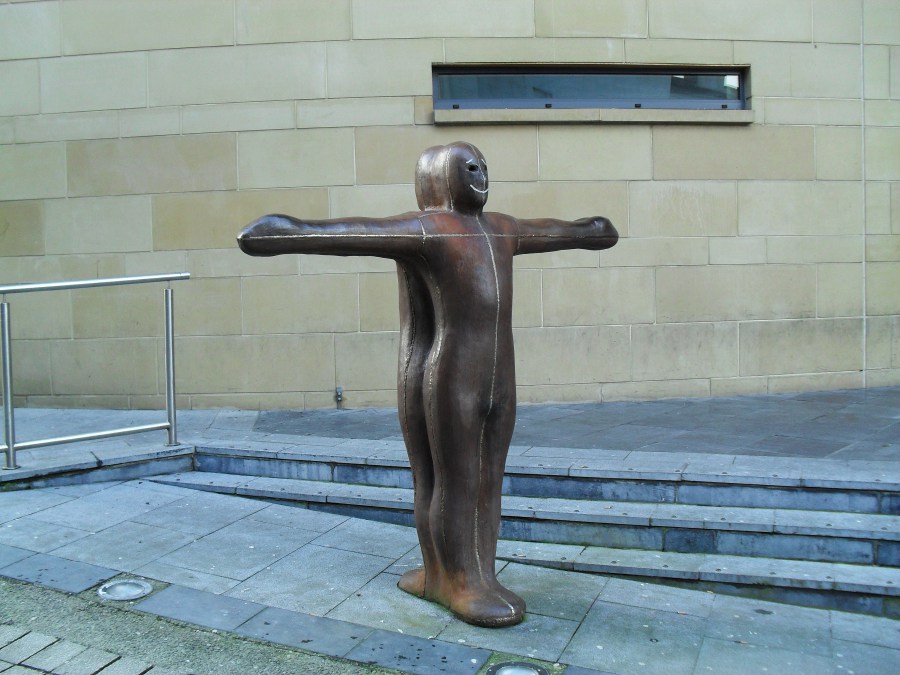I ENJOY looking at sculptures, especially those that stand out from the rest and become symbols of their locations. Every time I go to Derry in Northern Ireland, I would root towards the “Sculpture for Derry Walls”.
This is a three-part sculpture by Antony Gormley placed in three spots along the city’s 17th century fortified walls: on the east overlooking the Foyle River, over the Bogside by the remains of the Walker Monument and on the Bastion overlooking the Fountain Estate.
Each sculpture consists of two identical cast-iron figures joined back-to-back and are placed in such a way that one faces the walled city, while the other looks out. This is aptly described as “looking in, looking out”.
Symbolically, it represents Derry’s two main communities, separated by their differences yet joined as one body. The open eye holes allow the viewer to reconcile different views from within and without the city walls. Just like two sides of the same coin or two sides of the same story.
Sometime ago, I heard a story about two travelling angels who stopped to spend the night in a wealthy family’s home. The family was selfish and refused to let the angels stay in the mansion’s guest room.
Instead, they were given a small space in the cold basement. As they slept on the hard floor, the older angel saw a hole in the wall and repaired it.
The next night, the pair came to rest at the house of a very poor but hospitable farmer and his wife. They shared the little food that they had and let the angels sleep on their bed. However, in the morning, the farmer and his wife were in great distress to find that their only cow had died in the night.
The younger angel was upset and asked the older angel why he repaired the wall for the rich family and yet refrained from preventing the death of the cow.
The older angel replied: “When we stayed in the basement of the mansion, I noticed there was gold stored in that hole in the wall. I sealed it so the greedy man wouldn’t find it.
“Then last night as we slept in the farmer’s bed, the angel of death came for his wife, and I pleaded with him to take the cow instead.”
Like the events in the story, one is the apparent side that we see and the other is usually hidden.
I had the privilege of attending a counselling course conducted by the late Selwyn Hughes in Singapore. He was an excellent teacher with crystal clear articulatory skills.

‘Sculpture for Derry Walls’ by Antony Gormley
One of the important things that I learnt is to always endeavour to understand both sides. I learnt how not to jump to conclusions or act prematurely on the basis of hearing one side only. Listening to just one side of the story is akin to listening to a plot that has some missing key points. These key points often change the entire drama.
The arbitrator or the marriage counsellor, for example, usually listens to both sides of the story. In a marriage breakdown especially, there is this stark reality of two hurting sides in one union, just like the “looking in, looking out” sculpture on Derry Walls.
But for most of us who is neither arbitrator nor professional counsellor, we form our opinions quite quickly based on what we hear or see, usually from only one source.
When that source is our close friend or our sibling, we are then no longer value free in our judgment as we are clouded by trust and loyalty.
I was having coffee with a friend that I’ve known for many years and our conversation drifted from the weather to the people we knew. Suddenly I found that she was giving labels to certain people because of the way they dressed or behaved.
Everything was black and white. You had to have certain characteristics to be considered the preferred black or white. There were little neat boxes where categories were given and conclusions drawn.
I was aghast that the thought processes were rather rigid, and then shamefully realised that I used to think that way too because we shared the same culture and upbringing. But now I know there are many shades of grey in between and most times, nothing is absolutely black or white, and it is so wrong to put people in little boxes according to our own values and beliefs.
As I walked from Derry Walls towards Peace Bridge, the same image resonated. The “handshake” of the two structural arms in opposite directions symbolises the unification gesture of the 400-year-old physical and political gap between the two sides of a once bitterly divided community.
THIS ARTICLE WAS ORIGINALLY PRINTED IN THE NEW STRAITS TIMES MALAYSIA June 24 2018
http//www.nst.com.my/opinion/columnists/2018/06/383411/looking-looking-out

No comments:
Post a Comment